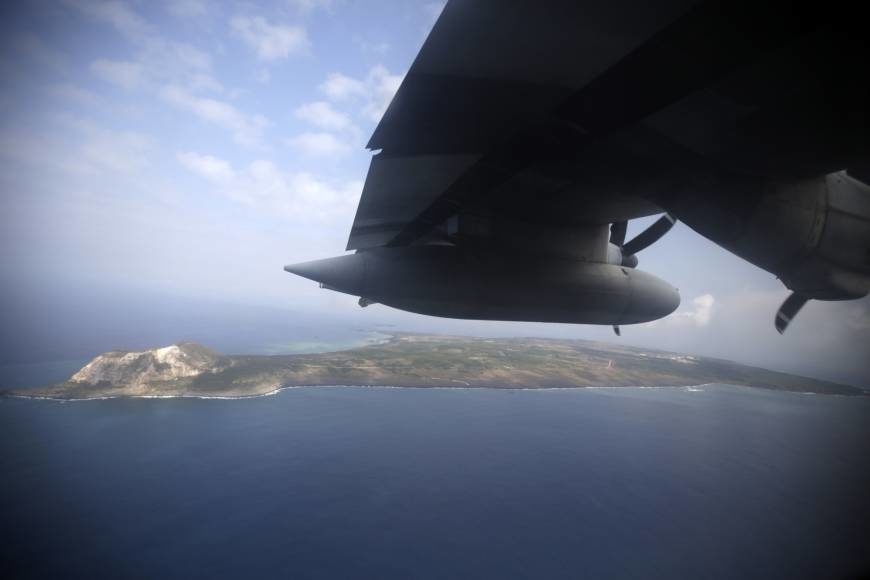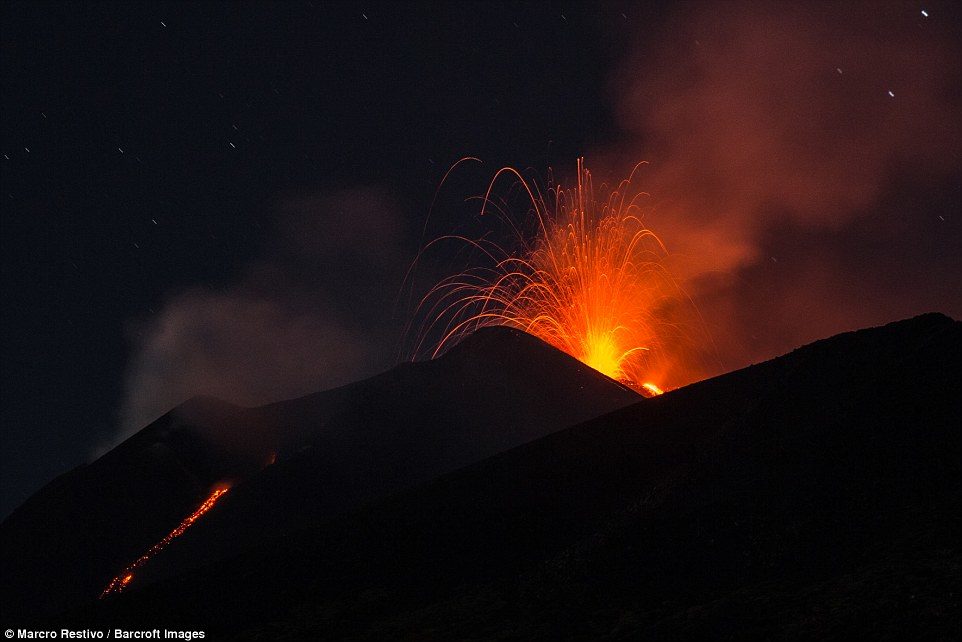
© APIwo Jima, now known officially as Ioto, is seen from an airplane in Japan in 2015. The Meteorological Agency said Wednesday that aerial photos detected signs of undersea volcanic eruptions off the southern coast of Iwo Jima, the site of one of the bloodiest campaigns in World War II.
Signs of undersea volcanic eruptions were detected at Iwo Jima, the site of one of the bloodiest battles in World War II, meteorological and defense officials said Wednesday.
Aerial photos taken by navy aircraft earlier Wednesday
showed seawater shooting as high as 10 meters (33 feet) above the surface just off the island's southern coast, the Meteorological Agency said.
The island, which has been renamed Ioto, has been showing increased volcanic activity since the weekend, the agency said, warning of more eruptions. The island is 1,250 km (780 miles) south of Tokyo.
Ioto last had an undersea explosion off its northern coast in 2013, and small overland explosions at few places in 2015, the agency said.
Defense officials said troops stationed on the island are safe and there are no evacuation plans. The island is closed to civilians, except for those with permits to search for the remains of more than 10,000 soldiers still unaccounted for or to attend memorial services and other special events.



Comment: Future volcanic eruptions could cause more climate cooling